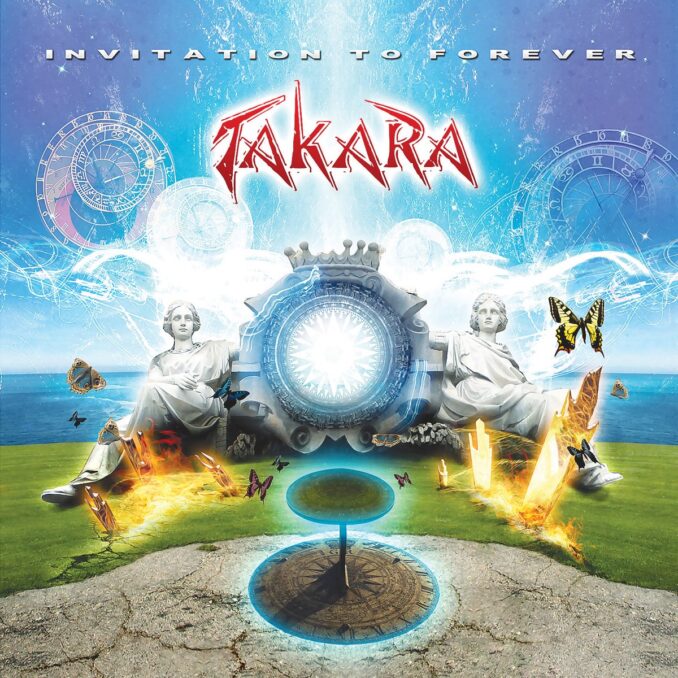
-
TAKARA - Invitation To Forever - 5/105/10
Summary
Prog Rock Records
Release date: October 31, 2008
User Review
( votes)Takara is closing in on their twentieth band anniversary, so after several years of silence, with the exception of a “Best Of” release which is nothing to satisfy their fans, of course, Neal Grusky, bandleader of Takara, thought it about time for a new album. So he gathered around a few experienced musicians which seem to be a very good foundation to build a Melodic Rock album on: Patrick Johannson and Bjorn Englen are the rhythm section of Shredmaster par excellence Yngwie Malmsteen, and the Brazilian Gustavo Monsanto who already worked with French band Adagio and Timo Tolkki’s Revolution Renaissance project.
Generally, that sounds like an excellent idea. The crew knows their craft and act very professionally, and at no point is the guitar pushed to the back, although keyboards are always present. Even the mandatory ballad is only half bad. Still, there are a few dark stains on the otherwise shiny vest of Takara.
First of all, there is the new singer. Gustavo has experience, still he often sounds unsecure and weak. It is questionable if one really had to search as far as Brazil to find a mediocre vocalist, and end with being only partly successful. Sure, following the mighty Jeff Scott Soto who seems to be still a friend of Grusky as he helped with backing vocals, is a difficult task. But it is also one which could have been done better.
Said backing vocals by Soto also add to the feeling that the Brazilian is nowhere near the Swedes’ abilities as the contrast is intentionally provided as demonstrated in “This Photograph”. And when Monsanto let’s his voice climb high up into the vocal heights where the air becomes much thinner for a lot of the singers out there, he sounds like he greets an occasional high note as a friend as he realizes he will not see it again so close for a while. He frequently misses only by a nuance, but by getting it nearly right sounds quite stressed. Makes one wonder if nobody ever listened to the music before the CDs were produced, for example to “Nowhere To Run”?
But that is not all, as it is not justified to blame the fact that Invitation To Forever has the half life period of an instable isotope in one’s CD player only on Monsanto. Neal Grusky also adds his share to the problem, as all his compositions reflect the age of Takara adequately. Everything sounds old fashioned, simple and heard before. That was surely original at the end of the Eighties, but as Roland states it in Stephen King’s The Gunslinger: “The World Has Moved On”. So have the listeners, and even if fans have to say “not bad” to each single track, maybe with the exception of “555” which actually is, over the distance the album is tediously mediocre. There have been years where such a release would have made every Melodic Rock fan rejoice, but Takara missed that time. And today there are enough better releases to be bought, so Invitation To Forever will get that itself – “Invitation To Forever … stay on the shelf”.
Finally, one more question has to be raised. After six years the band returns to the studio to record a new album. Is it really necessary to re-record the old song “Spotlight” again? Not as a bonus track, mind you, but as the fourth song. The songs are not that interchangeable, Mr. Grusky, that it would go unnoticed. And even worse that it is definitely a highlight of the album – again.




Be the first to comment